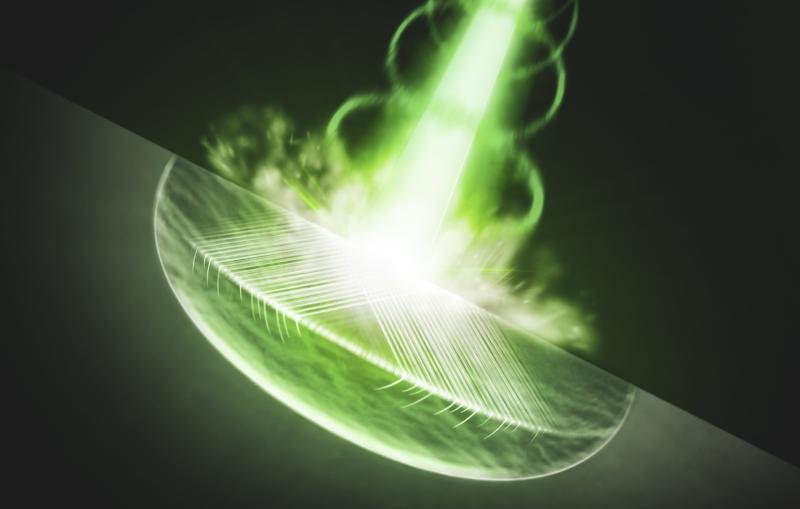SLAC Researcher Receives DOE 'Early Career' Grant to Support X-ray Optics and Imaging
Anne Sakdinawat’s Team Will Work to Develop New Tools for Experiments at Synchrotrons, X-ray Lasers
Anne Sakdinawat, an associate staff scientist at the Department of Energy’s SLAC National Accelerator Laboratory, has been recognized with a prestigious DOE Early Career Research Program grant to advance her work in creating and using next-generation focusing and imaging devices for X-ray experiments at SLAC and other research sites.
Sakdinawat joined SLAC in 2012 and is one of 44 researchers this year from a nationwide pool of about 620 applicants who will receive a DOE Early Career grant. The grant program, in its sixth year, supports full-time scientists at DOE national laboratories and researchers at U.S. universities who received their doctoral degrees within the past 10 years.
The five-year grants provide a minimum of $500,000 per year for each DOE lab scientist and $150,000 per year for each university researcher to cover salary and research expenses. Awardees are selected based on a peer review by outside scientific experts.
“This prestigious award is a clear recognition of Anne's research in novel X-ray optics and will allow her to expand her research effort and have greater scientific impact,” said SLAC Director Chi-Chang Kao. “We look forward to seeing a new wave of innovations from Anne.”
Sakdinawat’s grant-related work will focus on developing new imaging tools and techniques for experiments at some of the brightest X-ray sources on the planet, including SLAC’s Stanford Synchrotron Radiation Lightsource (SSRL) and the Linac Coherent Light Source (LCLS) X-ray laser, both DOE Office of Science User Facilities that are open to researchers from around the globe.
“The applications are quite broad,” she said. “We will study various materials and designs to develop optics that can well-utilize very bright X-ray beams.”
Sakdinawat, who works at SSRL, said she was glad to receive the news about continuing support for her research, which includes a patent-pending etching technique that can be used to create customized tools, called X-ray optics, to better focus X-rays or otherwise improve the quality of X-ray-produced images. The manufacturing process she helped to pioneer can produce X-ray optics with extremely precise nanoscale features. The method is detailed in a scientific journal article that appeared last year in Nature Communications. Her work has also been supported by the Defense Advanced Research Projects Agency, a U.S. Department of Defense agency.
“I’m very honored and grateful,’” she said of the grant award. “This continues the work my team has been doing to shape X-ray beams and develop new imaging techniques.”
Before coming to SLAC, Sakdinawat worked as a research scientist in the Electrical Engineering and Computer Sciences Department at the University of California, Berkeley, and completed her PhD in bioengineering at the University of California, San Francisco and UC Berkeley. In 2008 she was awarded the Werner Meyer-Ilse Memorial Award, which honors young scientists for contributions to X-ray microscopy.
Contact
For questions or comments, contact the SLAC Office of Communications at communications@slac.stanford.edu.
SLAC is a multi-program laboratory exploring frontier questions in photon science, astrophysics, particle physics and accelerator research. Located in Menlo Park, Calif., SLAC is operated by Stanford University for the U.S. Department of Energy’s Office of Science.
SLAC National Accelerator Laboratory is supported by the Office of Science of the U.S. Department of Energy. The Office of Science is the single largest supporter of basic research in the physical sciences in the United States, and is working to address some of the most pressing challenges of our time. For more information, please visit science.energy.gov.







